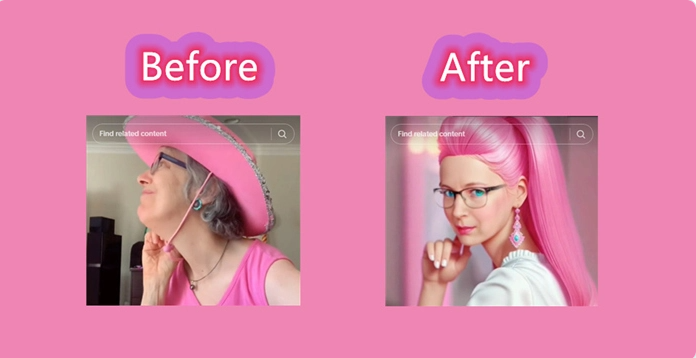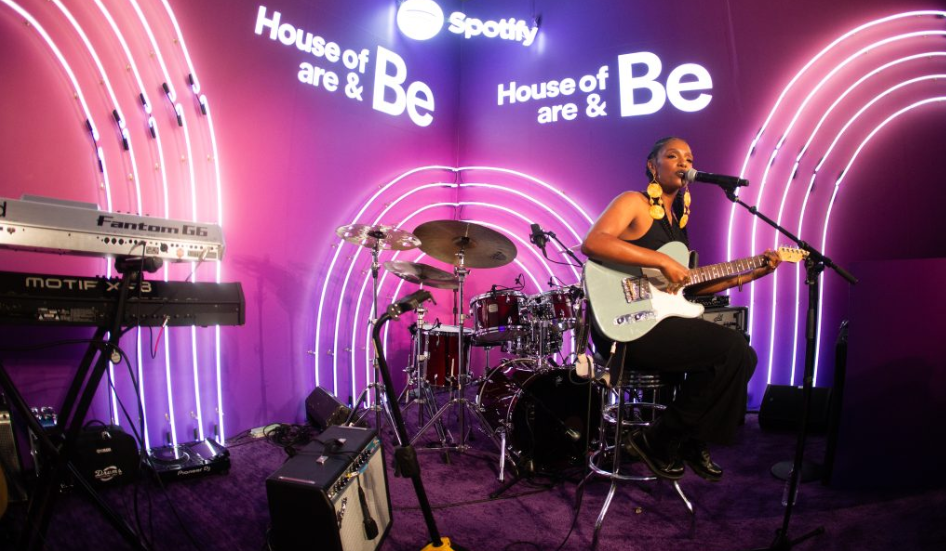The Secret Psychology Behind 4 Viral Experiential Campaigns and Brand Activations

By Faith Keiser, Founder, EventNation.com and former pop music critic for The Philadelphia Inquirer
Many marketers struggle for their brands to be noticed above the noise of so many communications channels. As a result, marketers are moving beyond traditional advertising and social media posts to create memorable, emotionally resonant events that engage consumers on a deeper level. These are corporate events, but not your parents’ corporate events. Experiential marketing is a powerful approach that transforms audiences from passive viewers into active participants.
Whether it’s a high-impact brand activation, an immersive brand storytelling experience, a hybrid event, or a community-driven networking campaign, the most successful experiential marketing campaigns are grounded in customer psychology and aligned with brand stakeholder goals.
In this article, we’ll explore four top-performing types of experiential events — give examples, and unpack exactly why they worked. From the virality of the Barbie Movie Selfie Generator to the cultural connection created by Spotify’s “House of Are & Be,” these campaigns demonstrate how smart experiential strategy can boost customer engagement, elevate brand perception, and deliver ROI for brand stakeholders.
1. High-Impact Product Activations
Use When: Launching or reintroducing a product

Creating interactive demos, pop-ups, and hands-on previews allow potential consumers to get acquainted with the product by directly experiencing its benefits. These events build hype, foster trial, and encourage word-of-mouth. The best product activations stimulate whimsy, create a sense of shared identity with the brand, and incorporate pathways to social media virality.
Example: The Barbie Movie Selfie Generator was an online interactive tool accessible via the website barbieselfie.ai. This platform allowed users to upload their photos and transform them into personalized Barbie or Ken movie posters. The generator was widely promoted across social media platforms, and in-person at “pink carpet premieres,” encouraging users to share their creations online. Additionally, an augmented reality (AR) filter associated with the Barbie movie was available on Instagram, enabling users to engage with the Barbie theme directly within the app. These activations promoted the film while offering a fun, shareable brand interaction that received over 13 million users.
The Barbie Movie Selfie Generator succeeded for consumers because it satisfied these psychological needs and desires:
- Autonomy: The activation empowered users to personalize their interaction, giving them a feeling of control, not being “marketed to.”
- Identity: The activation allowed participants to see themselves reflected within the brand.
- Social Proof: Shareable formats (like selfies and branded AR filters) encouraged virality and peer influence.
- Low-Friction, Low-Stress: The activation was intuitive and quick to use due well-designed user experience (UX.)
The Barbie Movie Selfie Generator satisfied brand stakeholder goals of:
- Driving pre-release buzz
- Generating user-generated content (UGC)
- Reinforcing brand values of inclusivity and body-positivity
- Creating an easy pathway for social media virality
The result? A fun, inclusive campaign that created emotional anticipation and peer-driven promotion, and could be measured by stakeholders in social media mentions and participation at live events.
2. Immersive Brand Storytelling Experiences
Use When: Building brand affinity and emotional connection
Think multi-sensory installations, themed environments, or art-house style events that invite audiences to step into your brand’s story. Experiential marketing professionals can immerse customers in a brand, engaging them in a multi-sensory experience. These experiences are typically advertised through omnichannel activations of digital ads, influencer marketing, and branded email.
Example: Patrón Tequila’s Virtual Hacienda Experience was a virtual tour of their hacienda in Jalisco, Mexico, that allowed users to explore the grounds visually, from agave fields to barrel rooms. With guided narration, traditional Mexican music, and 360° visuals, the immersive site gave users a behind-the-scenes look at how Patrón is handcrafted, from blue agave harvesting, to fermentation, to bottling. To make an even bigger impression, Patrón offered curated tasting kits that could be shipped to consumers and enjoyed in conjunction with the narration on the website.
The Patrón Tequila Virtual Hacienda Experience succeeded for consumers because it used these psychological tools:
- Curiosity and Enjoyment: The activation’s sensory design triggered curiosity, and its mailed sample kits sparked enjoyment and made consumers feel like a VIP.
- Lived Experience: When users “walk through a story,” even virtually, the brand becomes a lived experience.
- Trust: Showing the “behind-the-scenes” builds trust in the brand with authenticity, and increases perceived quality.
The Patrón Tequila’s Virtual Hacienda Experience satisfied brand stakeholder goals of:
- Showcasing the brand’s heritage and craftsmanship
- Increasing perceived brand authenticity and quality
- Reinforcing premium product positioning
3. Hybrid and Digital Event Campaigns
Use When: Expanding your reach by engaging current consumers to boost brand evangelism.
Incorporating livestreams, virtual reality, gamification, or AI features ensures both in-person and remote audiences can engage meaningfully with the brand. Hybrid experiential campaigns can be content-rich, highly interactive, and globally inclusive. It blurs the lines between brand experience, education, and community — while still driving product usage and long-term customer loyalty
Example: Adobe MAX is Adobe’s flagship annual conference designed to inspire and educate creatives while showcasing new Adobe product updates. What makes it stand out as an experiential hybrid campaign is its combination of high-production virtual keynotes streamed globally; hands-on virtual workshops and breakout sessions featuring live and virtual collaboration and Q&A.; in-person brand installations and creator meetups in major cities; and social sharing, where attendees are encouraged to share the designs they create at the conference on social media.
The Adobe MAX hybrid conference succeeded for consumers by satisfying these psychological needs:
- Belonging: All consumers were included, and could participate in learning sessions, no matter their location.
- Curiosity and Mastery: Self-directed learning, guided by on-site professionals and networking groups, blurred the line between education and brand experience.
- Joy of Creativity and Social Proof: Encouraged content creation, and in-person peer-to-peer interaction, plus social proof to share content results
The Adobe MAX hybrid conference succeeded for its stakeholders because it satisfied brand stakeholder goals of:
- Showcasing product functionality through active use, content creation, and social sharing
- Driving brand affinity and loyalty among creative professionals
- Creating a hybrid experience without compromising quality, which expanded brand evangelism among all consumers
4. Community-Driven Networking Experiences
Use When: Deepening relationships and fostering collaboration.

Hosting roundtables, workshops, or peer-led meetups will offer opportunities for real-time feedback and shared experiences. When you design networking experiences that speak to shared identity, values, and mutual goals, the networking becomes authentic. Community grows best in spaces (virtual or physical) where people feel seen, safe, and valued — not just sold on product features.
Example: Spotify’s “House of Are & Be” (a play on the musical genre, R&B) was a community-centered networking activation that celebrated black creators, music industry professionals, marketers and influencers at the Essence Festival of Culture in New Orleans. It featured live performances by up-and-coming black artists; panel discussions and fireside chats with creators and music executives; plus networking lounges with visual art installations and music by black artists. It was so successful that the activation was repeated in major cities as a stand-alone event.
The Spotify “House of Are & Be” succeeded for consumers because it satisfied these psychological desires:
- Affiliation and Meaning: People crave connection through a sense of shared identity.
- Feeling Savvy: Consumers were intrigued by encountering new music and art vetted by Spotify’s professionals.
- Celebration and Connection: The activation encouraged a safe, celebratory space for organic connection.
The Spotify “House of Are & Be” satisfied brand stakeholder goals of:
- Building loyalty and emotional connection with the brand
- Elevating the brand’s perception in the marketplace
- Building community among consumers, fostering lasting relationships
The most effective experiential marketing campaigns don’t just entertain — they connect. They make people feel something meaningful, reflect their identities, and invite them to co-create the brand experience. Whether you’re planning a product launch, a virtual brand activation, or a community-first event, grounding your event design in customer psychology while aligning with your stakeholders’ business goals is key to success.
As these four examples show — from Adobe MAX’s hybrid innovation to Patrón’s digital storytelling — experiential events that are immersive, inclusive, and encourage social proof have the power to drive not just engagement, but transformation. When executed with intention and creativity, they build the kind of emotional loyalty that paid media can’t match.
Looking to design your own brand activation or hybrid event? Start with your audience’s psychological motivations and desires, lean into cultural relevance, and map each moment to a measurable outcome for your brand. That’s the blueprint for experiential marketing success.



